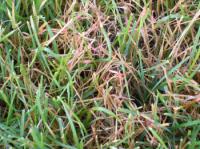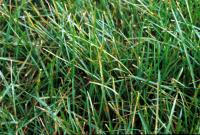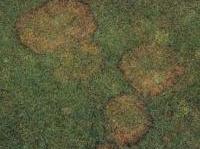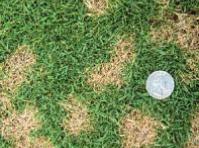Lawn Diseases
Prevention is better than cure!
Most lawn diseases are caused by fungi, although grass species vary in their susceptibility to particular diseases. Other factors affecting disease development include the overall health of the lawn, weather and seasonal conditions and lawn maintenance practices.
Often, usually after a heavy rainfall, you'll observe an unusual growth in your lawn. The growth is probably a fungus, but that doesn't necessarily mean disease. Ask yourself these two questions;
Often, usually after a heavy rainfall, you'll observe an unusual growth in your lawn. The growth is probably a fungus, but that doesn't necessarily mean disease. Ask yourself these two questions;
- Is the growth covering the plant and shutting out light?
- Did the growth appear suddenly, or has it been building over time?
Unless the grass is suffering, the fungus is probably harmless and you can leave it alone. Fungi often appear quite suddenly, only to disappear just as suddenly when conditions change.
Preventing disease does mean making sure that watering, mowing, and fertilisation requirements of your lawn are met. The more you water and fertilise your lawn, the more vigilant you must be at recognizing disease. Preventative applications of fungicides at the first sign of outbreak are always better than treating a massive fungal infection.
Remember! Mow it correctly, water it correctly, fertilise it correctly and don't forget to keep your eye on it!
 |
Red ThreadRed thread can occur at any time of year, but is most prevalent in late summer and is only likely to appear on lawns that are deficient in nitrogen. Fine-grassed lawns are particularly affected by Red Thread. Very small, bright pink to red threads of fungus develop on small patches of grass. The fungus very rarely kills the lawn.
The fungus is very common after a heavy rain fall, followed by hot humid days and when the soil is nitrogen deficient or poorly aerated. The Chemicals and fertilisers will use will control the disease and help prevent it coming back. Scarifying helps keep Red Thread under control and will greatly improve your lawns condition
|
 |
RustThe presence of rust in your lawn is a minor annoyance. Even though grass blades are covered with rusty orange spores, don’t panic, the disease normally disappears with a change in weather or fertilization. You will notice the orange dust on your footwear if you walk through the infected areas of grass.
Do not ignore Rust in your lawn as a neglected rust infection can destroy your good turf. Pimp my Lawn can control the disease if it occurs but more importantly, our regular programme is designed to help prevent Rust from appearing in your lawn to begin with. Scarifying helps keep Rust under control and will greatly improve your lawns condition. |
 |
Brown PatchBrown patch is a common fungal disease and will affect all turf grass types in throughout the year. The disease is favored by excess thatch, hot days, high humidity and excess moisture. A Lawn mown too low is also vulnerable. Moisture is crucial for the spread of brown patch and provides perfect nutrition for this lawn disease.
If brown patch is present in the lawn it looks likje a rapidly enlarging “smoke ring.” However, it isn’t always present. As the disease spreads, the affected areas will grow to several feet in diameter. Blades turn from a purplish-green color and eventually wither and dry to a pale light brown. To help control brown patch, make sure that you first do not overdose the lawn with nitrogen. Prune trees to reduce shade and to promote better air circulation. Scarifying helps keep Brown patch under control and will greatly improve your lawns condition. |
 |
Dollar SpotDollar spot is a common fungal disease and can attack nearly all grass types. Attack generally occurs in a lawn that is under stress and once it gains traction it can spread easily by lawn mowers or walking through the infected areas. The fungus initially appears as a 3-8 cm circular to irregular straw-coloured patches that eventually form larger blighted areas.
When the diseased spots have progressed to a bleached, straw-like stage, typical dollar spot lesions may be found. These lesions are shaped like an "hour glass” and the blades also show dieback from the tip. When the fungus is active and moisture is present a cobwebby growth can sometimes be seen growing on the grass blades. The disease affects most turf grasses and low fertile lawns to be the most susceptible to dollar spot. Drought also increases susceptibility to disease along with dense thatch. Our regular treatments will help stimulate foliar growth faster than the fungus can injure the blades, so recovery is typically fast. Regular watering will also help. |
 |
Fusuriam PatchFusarium is a fungal disease that occurs on grass and golf courses provide the perfect environment for it to develop as greens are
generally well watered, sheltered with a high level of nitrogen present. Fasurium creates circular patches up to 8 inches in diameter. Fungal threads become visible and the blades of grass are light brown and often stick together. Fusarium patch can be controlled through different methods but the chemical method is the most widely used method.
Other controls are possible and Pimp my Lawns organic biological activator (applied 4 times per annum in the regular weed and feed service) will greatly reduce the incident of Fusarium patch in your lawn Scarifying helps keep Fasarium patch under control and will greatly improve your lawns condition
|

